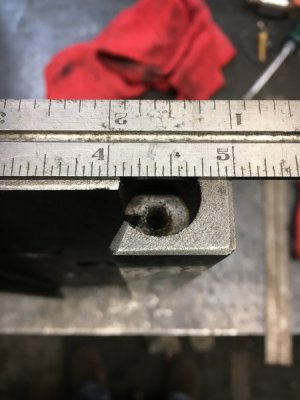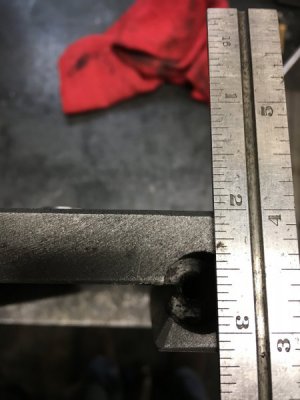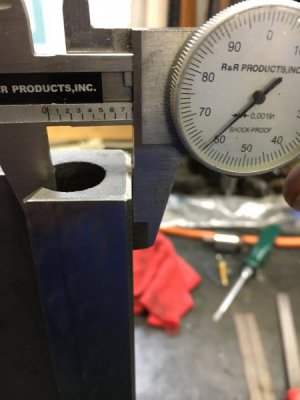- Joined
- Mar 7, 2018
- Messages
- 42
Do you just swap the crossslide back when you need to do taper work?
There is nothing wrong with drilling the cross slide. The circular t-slot does not provide for using a t-nut of substantial size. On my pm-1440gt I only drilled the 4 corner mounting holes and used cap screws with long shoulders so part of the shoulder engages the cross slide acting as a pin. My riser has a boss on the bottom that engages the center hole on the cross slide.What I don't like about this approach is drilling and tapping seven holes in the cross slide. Did you investigate the possibility of using T-nuts in the same manner that the compound is attached, and instead of a registration bar, making the tool post solid block slightly wider than the compound with a recess milled such that it straddles the compound or hangs over on the spindle side (you have a DRO scale on the tailstock side)? Just asking, I have not started my conversion yet but was thinking of different ways to mount the solid block.
If you don't want to drill the cross slide I would make t-nuts at thick as possible to use in the circular t-slot and use four. Use a registration boss in the center pocket between the riser and cross slide. Have the forward edge of the riser hang over the cross slide edge or bolt a plate to the forward side of the riser that engages the cross slide.
Don't underestimate yourself. Easy with a mill. It is a simple drilling and tapping job, just requires some disassembly of the cross slide.I don't want to drill the cross slide. I will probably mess it up!
Any reason the riser can't be made from cast iron? You can get gray cast iron 6"x6"x3" for about 60USD excluding shipping from Speedy. The same in 1018 would cost about 280 USD.



